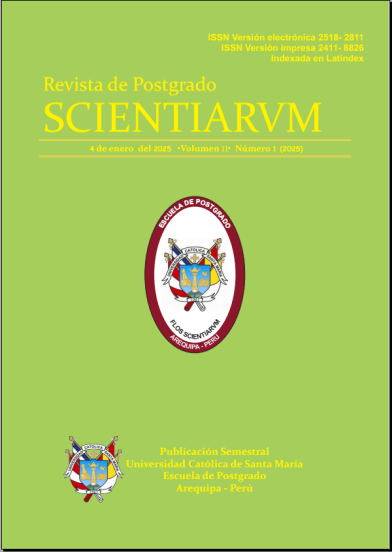EFECTO DEL SUSTRATO SOBRE LAS PRUEBAS DE ORIENTACION QUIMIOLUMINISCENTES (BLUESTAR FORENSIC Y LUMINOL) EN LA DETECCIÓN DE RESTOS HEMÁTICOS
RESUMEN
Se realizó la determinación del efecto del sustrato sobre las pruebas de orientación (Bluestar Forensic y Luminol) en la detección de restos hemáticos, en el Laboratorio de Biología Forense del Departamento De Criminalística (DEPCRI); como muestra se utilizó sangre humana diluida con agua desionizada estéril en concentraciones de (1/500,1/10.000, 1/25.000, 1/1.000 000, 1/5.00 000), la muestra se colocó en los soportes de madera barnizada, monedas de latón, monedas de alpaca, vidrio, loza cerámica y telas naturales de algodón para conocer su reacción y su comportamiento en los diferentes sustratos.
En lo que respecta a la sensibilidad y especificidad, se hallaron los resultados estadísticos empleando tablas de contingencia como herramienta de análisis, estos resultados se tabularon en las casillas de la siguiente manera: (a) positivos, (b) Falsos positivos, (c) Falsos negativos y (d) negativos, datos con los cuales se calculó la sensibilidad, especificidad e índice de Kappa para las dos pruebas; además del tiempo de duración de la quimioluminiscencia producida desde el momento de agregado los reactivos hasta la finalización de la misma.
Para la evaluación de la intensidad se categorizo en; 4+ (alta), 3+ (mediano), 2+ (baja).1+ (muy baja) y - (negativo) según fueron observadas.
Finalmente se pudo concluir que las técnicas de Bluestar Forensic y Luminol poseen diferencias altamente significativas influenciadas por el tipo de sustratos y concentración de la muestra, que interfieren con la intensidad, sensibilidad, especificidad así como también el tiempo de luminiscencia siendo el Luminol una prueba de orientación más sensible y con una luminiscencia más prolongada que el Bluestar.
Palabras claves: Bluestar Forensic, Luminol, sustratos, intensidad, sensibilidad, especificidad, quimioluminiscencia, manchas de sangre, criminalística.
ABSTRACT
The determination of the effect of the substrate on the orientation tests (Bluestar Forense and Luminol) in the detection of blood residues was carried out at the Laboratory of Forensic Biology of the Department of Criminalistics (DEPCRI); (1 / 500,1 / 10,000, 1 / 25,000, 1 / 1,000,000, 1 / 5,000,000), the sample was placed on varnished wood supports, brass coins, alpaca coins, glass, ceramic earthenware and Natural cotton fabrics to know their reaction and behavior on different substrates.
(A) positive, (b) False positives, (c) the results of the survey, False negative and (d) negative, data with which sensitivity, specificity and Kappa index are calculated for the two tests ; In addition to the duration of the chemiluminescence produced from the moment of addition of the reagents until the end of the same.
For the evaluation of the intensity was categorized in; 4+ (high), 3+ (medium), 2+ (low) .1+ (very low) and - (negative) as observed.
Finally it was concluded that the techniques of Bluestar Forensic and Luminol have highly significant differences influenced by the type of substrates and concentration of the sample, which interfere with the intensity, sensitivity, specificity as well as the luminescence time, which is the Luminol a test of Orientation more sensitive and with a longer luminescence than Bluestar.
Keywords: Bluestar Forensic, Luminol, substrates, intensity, sensitivity, specificity, chemiluminescence, blood stains, criminalistics.
Revista Seleccionada
Julio 2017 Volumen 3 - Número 2 P 59-65
DOI: 10.26696/sci.epg.0061
Enlaces
CIENCIAS SOCIALES Y HUMANIDADES
DERECHO AL AGUA COMO DERECHO FUNDAMENTAL EN EL ORDENAMIENTO JURíDICO PERUANO
LA AUDITORIA FORENSE: FRAUDES Y DELITOS ECONÓMICOS
MODIFICACIÓN DEL ARTÍCULO 2014° DEL CÓDIGO CIVIL: MUERTE ANUNCIADA DEL SISTEMA REGISTRAL?
VALIDEZ DE LA PRUEBA DE JUICIO NULO
FUNDAMENTOS CONSTITUCIONALES DEL DERECHO FINANCIERO Y PRESUPUESTARIO. LA “CONSTITUCIÓN FINANCIERA”
FLEXIBILIZACIÓN LABORAL EN LA CONSTITUCIÓN DE 1993
CIENCIAS BIOLÓGICAS Y DE SALUD
PROBLEMÁTICA ACTUAL EN SALUD BUCAL EN EL PERÚ
RELACIÓN ENTRE BIOTIPO FACIAL Y LA VÍA AEREA FARINGEA EN PERUANOS
EFECTO DEL PLOMO EN RATAS PREÑADAS. Rattus norvergicus WISTER–AREQUIPA – 2014


